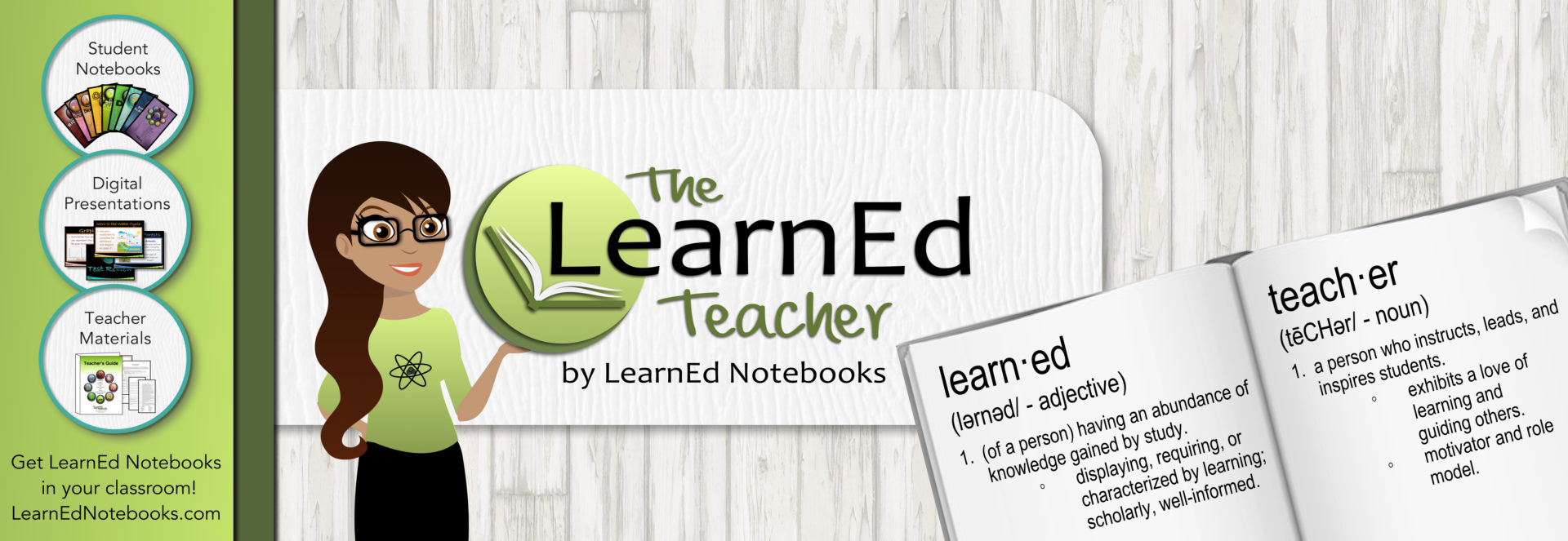One of our goals for this school year has been the focus on literacy in science. Too often, as science teachers, we assume that’s someone else’s job. But in reality, so many components of science are intertwined with reading and writing. In order to be scientists, our students also have to be able to read and write like scientists.
RELATED: FOR THE LOVE OF SCIENCE – HOW INCORPORATING LABS CAN SAVE YOU TIME!
At one of our conferences this fall, we were excited to discover their theme was promoting literacy in science. Our eyes had a special sparkle during that conference, because it’s one of our passions as well. But we know (from experience!) that it’s not always easy to fit all the science stuff in, let alone reading and writing.
In addition to the program as a whole, we’ve created several graphic organizers that center around the idea of including reading and writing into things you’re already doing. Sometimes it’s a very slight change that can make a huge difference.
RELATED: 60-SECOND SCIENCE: NON-NEWTONIAN FLUID
- Cause, Effect, and Explanation. We’re all familiar with the cause and effect chart and it’s applicable to so many things our students are studying. But by simply tweaking the chart to add space for students to write their explanation, you’re making them think through their causes and effects and take a few minutes to include writing into the assignment.
- Close reading. It’s easy to fall into the trap that reading is for their language arts or English teacher. But when we do that, we’re leaving out an entire type of reading and writing that they’re not getting. If we don’t help them stay updated with scientific articles and new discoveries, who is? (Hint: it’s not happening.) And yes, we all hate the idea of teaching to the test, but many end-of-grade and end-of-course tests require students to closely read and respond to articles. This step-by-step list is a no-fail solution. Because if I can do it, so can you!
- Explore a Scientist. Ok, here’ a confession: sometimes we make things much more difficult than they have to be. Incorporating reading and writing into science doesn’t have to be a formal lab report or a 12-page term paper. In fact, it shouldn’t only be the big, scary assignments. We also need to mix in writing (and reading) that’s manageable and interesting to the students we’re working with. This graphic organizer is one of my go-to’s because I an always make it relevant to what we’re studying.
- Science + Creative Writing Prompts. This one is way outside of my box. But my students love it because it’s different from what they’re used to doing in class. It gives them a chance to let their mind wonder. I love taking the viewpoint that there’s no right/wrong answer with these because that really gives them the freedom this assignment needs. It took me a while to wrap my mind around (and gather up the courage) to incorporate these short writing assignments in my classroom but I’m so glad I finally took that leap.
- STEM Reflections. This one was created because I felt like I was wasting precious time by creating a brand new graphic organizer each time we completed a STEM lab. After I designed two or three graphic organizers specific to an individual lab, I realized that I had a common theme throughout them. So I knew I had to create one that would work no matter what our STEM activity was for that day. Sometimes I still feel like there’s a specific question or topic that they need to address based on what we’ve just completed, so I write the question on the board and let them use the reverse side of their paper to answer it.
RELATED: HOW TO SUPPORT CREATIVITY IN THE CLASSROOM
Follow LearnEd Notebooks on social media! Pinterest // Facebook // Instagram // Twitter // YouTube
________________________

LearnEd Notebooks provides teachers and students with an innovative notebooking solution. We specialize in providing educators with a unique curriculum that allows you to break free from conventional methods of instruction and spend more time on labs and inquiry-based science. We provide the framework of an interactive notebook with the flexibility of teaching strategies that seamlessly integrate with each teacher’s own methods of instruction. Our complete programs include printed student notebooks, digital presentations, and access to teacher resources — each focusing on diverse learning styles and engaging instructional strategies.
Click here to get LearnEd Notebooks in your classroom!
________________________




